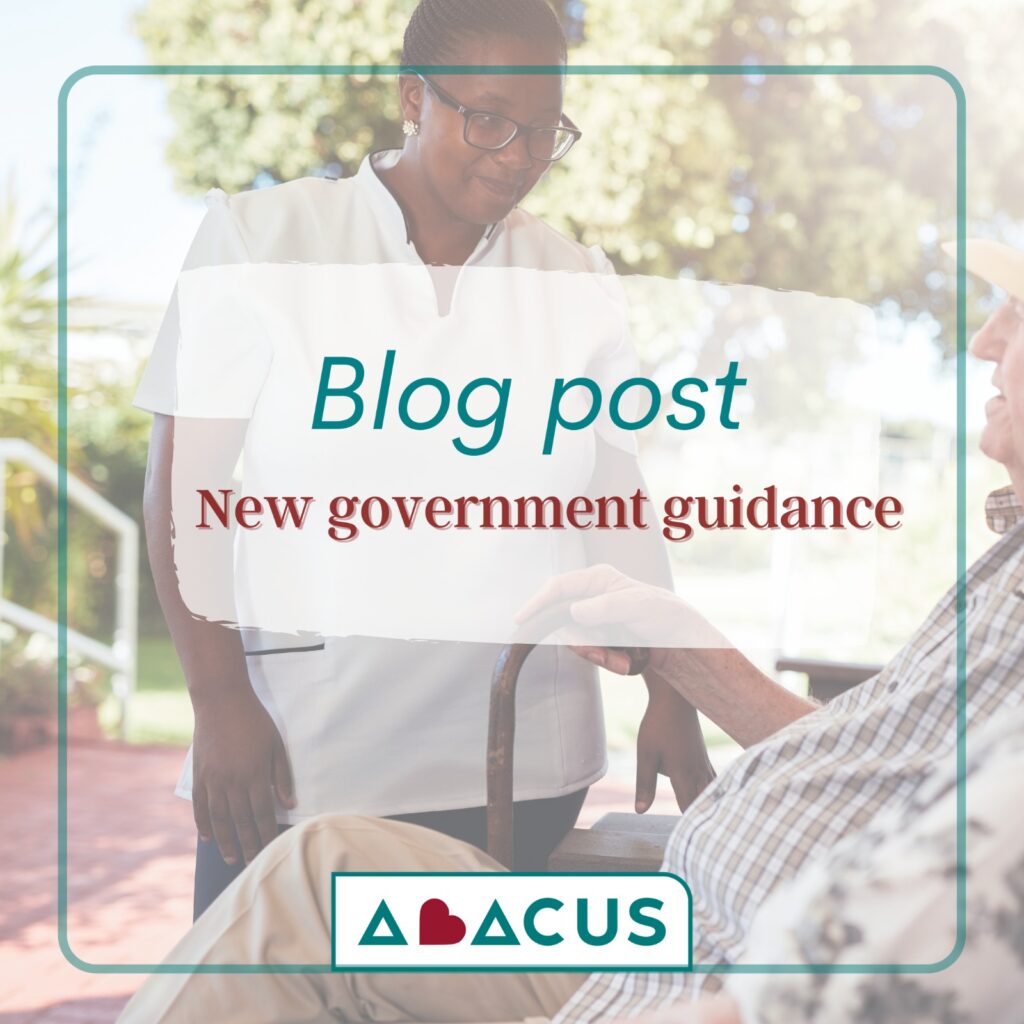New government guidance: Keeping active as a Disabled Young Person
Exercise. Whether we find it a struggle or a joy, we all know that keeping active is essential for our physical and mental health.
Right?
Well, it may come as a shock to you that this February the UK’s Chief Medical Officer, Chris Whitty, published their first ever guidelines on physical activity for disabled children and young people.
Surprising as this may be, we want to welcome the Government’s increasing investment in the issues affecting people with disabilities.
In today’s article, we’ll give you the low-down on the new government guidance. We’ll celebrate some amazing organisations that champion and encourage active lifestyles for people with disabilities. And we’ll tell you about how Abacus supports Service Users to keep active.
What do the guidelines say?
The UK’s Chief Medical Officers have given clear and simple guidelines which support disabled children and young people to be more active. They act as general guidelines, and an individual\’s needs and abilities should be taken into account when deciding the best way to incorporate the advice into an exercise regime.
- Disabled young people should spend 120-180 minutes doing moderate-to-vigorous aerobic activity
- Time spent should be split into manageable chunks. For example, 20 minutes per day or 40 minutes 3 times per week.
- Strength and balance should be the focus of activity 3 times a week
- Physical activity should be challenging, but manageable. A good question to ask is: ‘Can I do this today?’
*The new guidelines have been developed into an infographic, co-produced with disabled children and young people, with support from their families and carers.
Why is it so important?
- Physical activity supports individuals to improve their physical and mental health
- Young people with disabilities are less likely to be active than those without disabilities. This can lead to health disparities amongst peers
- There is misinformation about the risk of physical activity for disabled young people. But evidence suggests that keeping active is equally beneficial for young people with and without disabilities
- Physical activity can enrich disabled young people by: improving confidence and concentration, providing opportunities for meeting new people, strengthening muscles and improving motor skills
Who is supporting disabled people to achieve active lifestyles?
There are tons of organisations who understand the benefits of exercise for disabled people – as well as the challenges and barriers they face. They come up with creative ways to get disabled people moving.
We’re spotlighting three such organisations, so you can get inspired and get involved!
Activity Alliance is the national charity and leading voice for disabled people in sport and activity. Their ‘Being Active Guide’ is a supportive and encouraging tool to empower people to exercise, whatever their ability. The Activity Alliance website is full of great resources, including a search tool for inclusive gyms and advice on how to encourage your local sport and leisure facilities to become inclusive.
Special Olympics Great Britain is the nation’s largest, year-round sports training provider for people with intellectual disabilities. Activities are open to anybody with an intellectual disability – whatever their age or ability –and the website lists all of its accredited clubs and networks so you can get in on the action.
The Superhero Series encourages those with disabilities (or as they say, every day superheroes) to take part in fun activities and challenges. They design activity packs to help individuals engage in a way which suits them – which includes a stack of ‘Super Sensory’ challenges.
How does Abacus support Service Users to keep active?
At Abacus Care and Support, we wholeheartedly believe in supporting individuals to engage in physical activity in a way which suits and works for them.
What do we do to put that belief into action?
- We make sure our sites are situated near open spaces, and within reasonable distance of sport and leisure facilities
- We engage Service Users in conversations about their fitness choices and aspirations, and support them to set reasonable but ambitious exercise goals
Let’s celebrate our government’s increasing awareness of the benefits and challenges of keeping active as a disabled person. And what better way to celebrate than by getting active ourselves?
On your marks… get set… go!

